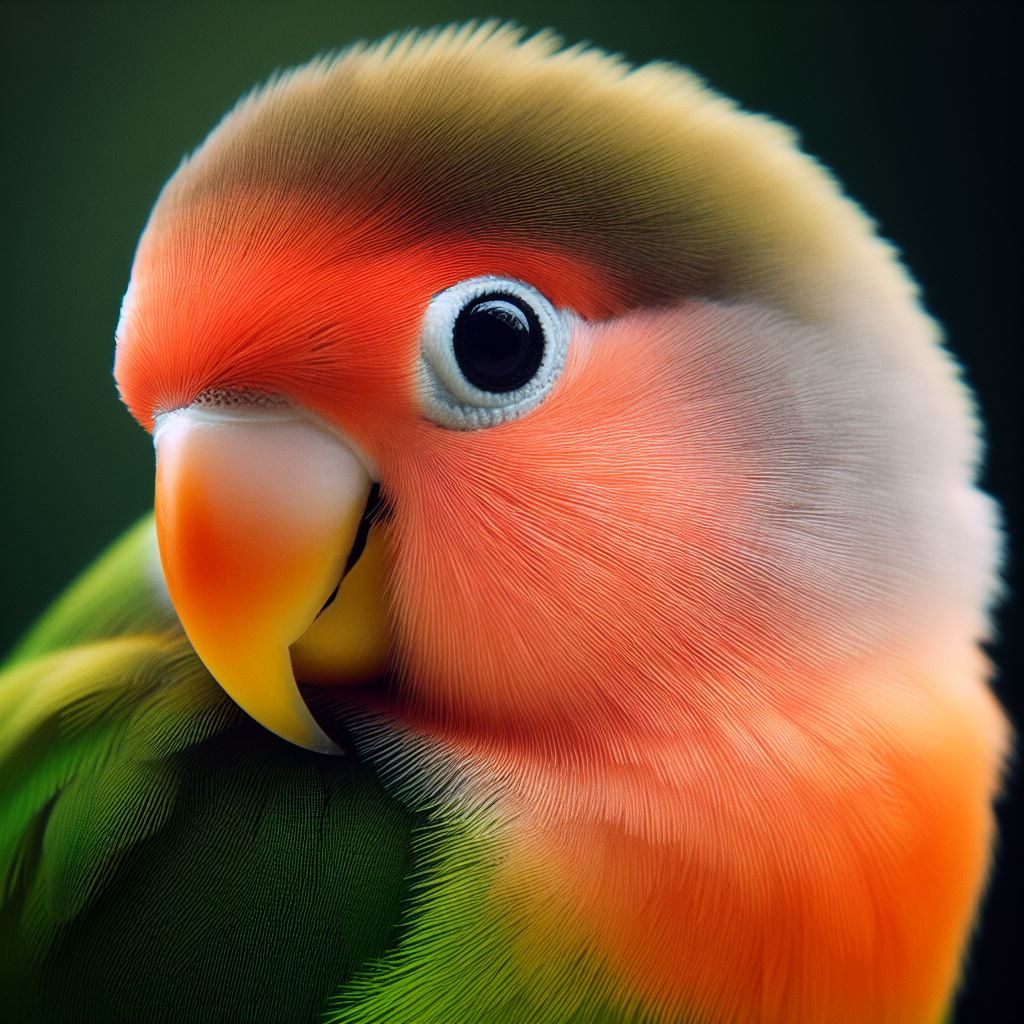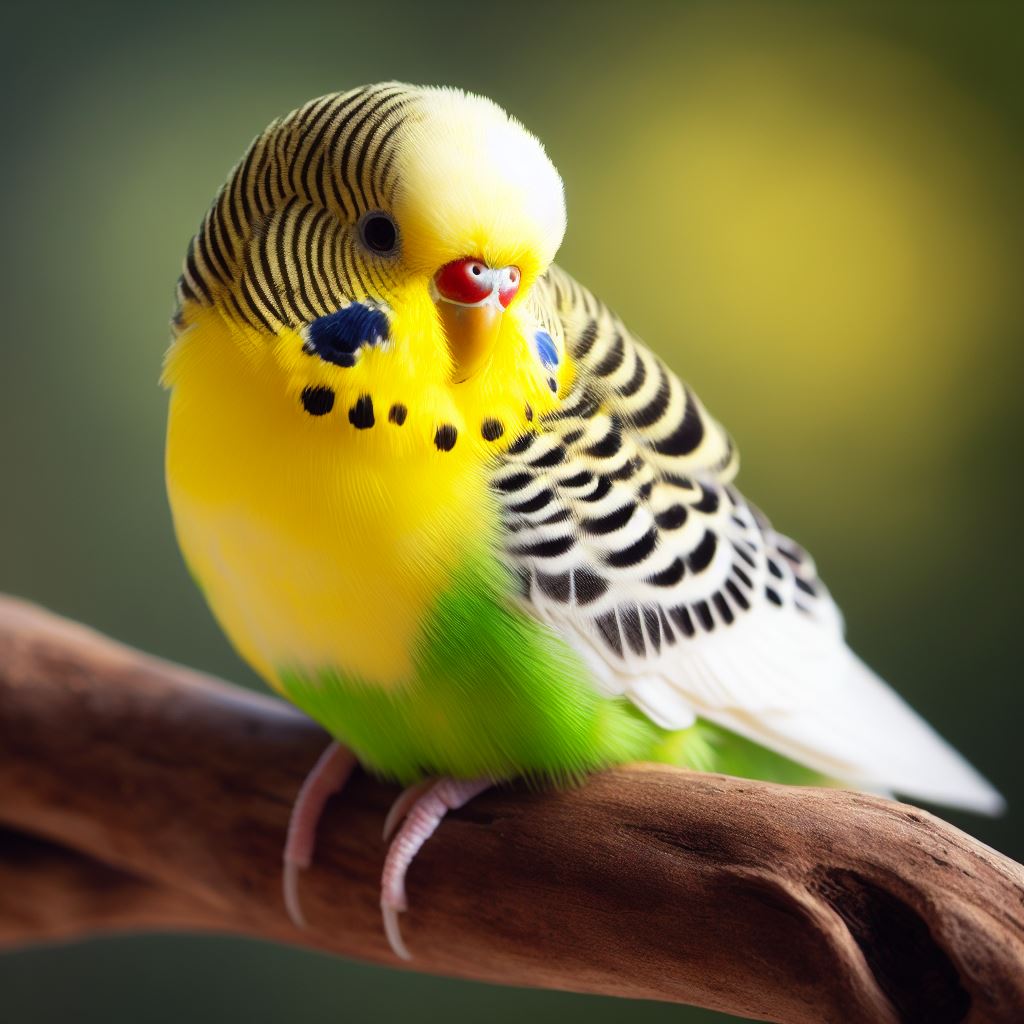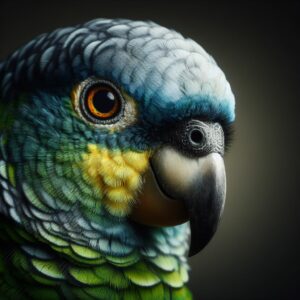A Lovebird is a delightful and charismatic companion, adored by pet enthusiasts worldwide. In this comprehensive guide, we will explore the intricacies of caring for these vibrant creatures, offering insights into their unique behaviors, dietary needs, and social dynamics. Let’s embark on a journey to understand the world of lovebirds and how to create a happy, healthy environment for them.
Selecting Your Lovebird
Lovebirds come in various species, each boasting its distinct colors and temperaments. Researching these traits is key in selecting a lovebird that aligns perfectly with your lifestyle and preferences.
Lovebirds belong to the genus Agapornis, which is native to Africa. There are nine different species of lovebirds, each with its unique colors and characteristics. They are small to medium-sized parrots, typically measuring between 5 to 7 inches (13 to 17 cm) in length. With proper care, lovebirds can live on average between 10 to 15 years, and sometimes even longer, depending on the species and their environment.
Each species of lovebird has its unique traits and charm, making them fascinating companions for pet enthusiasts. Whether you’re intrigued by the vibrant colors of Fischer’s lovebird or the playful nature of the Peach-faced lovebird, there’s a species to match every personality. Understanding these differences is the key to choosing the perfect lovebird for your home. Let’s explore the captivating world of lovebird species and find out what makes each one special.
Considering Lovebird Pairs
Lovebirds, as their name suggests, thrive on love and companionship. Their social nature extends beyond mere interaction; it delves into the realm of deep emotional bonds. Adopting a pair of lovebirds is not just an act of kindness; it’s a commitment to their well-being. In the company of their partner, lovebirds find solace and joy, sharing their days with a companion who understands them in ways humans can’t fathom. This companionship is not just about reducing loneliness; it’s about enriching their lives, ensuring that their existence is not merely survival but a tapestry woven with the threads of love and connection. So, if you’re considering bringing these delightful creatures into your home, consider the profound impact of adopting a pair – you’re not just giving them company; you’re giving them a life filled with love and happiness.
Adopting or Purchasing: Pros and Cons
Adopting from shelters symbolizes the heartwarming embrace of compassion, where lovebirds find solace in the care of kind souls. It’s not just about providing a home; it’s about offering hope and a future to a bird in need, creating a haven of love and understanding.
Conversely, purchasing from reputable breeders embodies a commitment to precision and purpose. It’s a choice made with the intent to align the lovebird’s traits with the adopter’s lifestyle. The meticulous documentation of lineage and health history ensures a lovebird that meets specific expectations, reflecting the dedication of both the breeder and adopter.
In this delicate balance, whether through the tender act of adoption or the thoughtful choice of a reputable breeder, the lovebird’s fate is shaped with care. Each decision, rooted in love and consideration, contributes to the broader tapestry of lovebird welfare, creating a world where these enchanting creatures can flourish, loved and cherished, in the arms of those who understand their unique magic.
Setting Up the Perfect Home
Choosing the Right Cage Size
Providing a sanctuary that echoes the vastness of the sky is pivotal for the happiness of lovebirds. Within the confines of a cage, their world should be an expanse where wings are not just decorative, but functional.
A spacious cage is more than a physical space; it’s a realm of freedom and joy. It grants lovebirds the liberty to spread their wings wide, to explore, to dance, and to indulge in the simple pleasure of flight. It’s in these moments of aerial grace that lovebirds find fulfillment, their spirits soaring with the same freedom they experience in the wild.
When selecting a cage, consider it not as a mere enclosure, but as a canvas for their flights of fancy. Opt for dimensions that mirror their wingspan, ensuring that within these bounds, they can partake in short, exhilarating flights. This isn’t just about mobility; it’s about honoring their nature, allowing them to express their avian essence.
In this spacious haven, lovebirds don’t just move; they glide, they explore, and they express the very essence of their being. It’s a gift of flight within four walls, a reminder that even in captivity, the spirit of freedom can prevail, making their confined world as boundless as the open sky.
Ideal Cage Placement
Place the cage in a well-lit, draft-free area away from direct sunlight and loud noises. This provides a sense of security and promotes a stable, stress-free environment.
Furnishing the Cage: Perches, Toys, and Enrichment
Diverse perches of varying sizes promote foot health while engaging toys like puzzles and bells stimulate their intelligent minds. Regularly rotating toys keeps them engaged and prevents boredom.
Lovebird Nutrition
Lovebird Diet Basics: Seeds vs. Pellets
Balanced nutrition is paramount. While seeds are a favorite, incorporating pellets ensures they receive essential vitamins and minerals, promoting overall health and longevity.
Fresh Fruits and Vegetables: Dietary Supplements
Supplement their diet with fresh fruits and vegetables. Leafy greens, apples, and carrots provide necessary nutrients, adding both variety and essential vitamins to their meals.
Importance of Clean, Fresh Water
Always provide clean, fresh water. Lovebirds, being playful creatures, might dip their food, underscoring the importance of changing the water multiple times a day to ensure hygiene.
Foods to Avoid: Toxic and Harmful Substances
Steer clear of avocados, chocolate, caffeine, and alcohol, as they are toxic to lovebirds. Additionally, remove pits and seeds from fruits to prevent potential choking hazards.
Lovebird Social Behavior
Understanding Lovebird Social Structures
Lovebirds are inherently social creatures, thriving on companionship. Understanding their flock dynamics is pivotal in creating a harmonious environment.
Bonding with Your Lovebird
Building trust takes time and patience. Spend quality time near the cage, offering treats, and speaking to them softly. Slowly extend your hand, allowing them to acclimate to your presence.
Lovebirds and Other Pets: Tips for Harmony
Introducing lovebirds to other pets demands caution. Supervise interactions, ensuring the safety of both the lovebird and the other animals, fostering a peaceful coexistence.
Recognizing Signs of Loneliness or Stress
Watch for signs of stress such as excessive preening, loss of appetite, or aggression. Addressing these signs promptly ensures your lovebird’s emotional well-being.
Mental and Physical Stimulation
The Importance of Mental Stimulation
Lovebirds are intelligent beings; mental stimulation is crucial. Rotate toys, introduce puzzles, and provide foraging opportunities to keep their minds active and engaged.
Physical Exercise: Flying and Playtime
Encourage short flight sessions in a safe, enclosed space. Playtime outside the cage provides exercise, keeping them physically fit and mentally stimulated.
DIY Toys and Games: Enhancing Mental Agility
Craft DIY toys using safe materials like paper rolls and untreated wood. Engaging them in interactive games sharpens their problem-solving skills and keeps them intellectually active.
Lovebird Health and Wellness
Regular Vet Check-ups: Importance and Frequency
Regular veterinary check-ups are vital for early disease detection. Schedule annual visits to ensure their health and promptly address any concerns that arise.
Common Health Issues: Symptoms and Solutions
Stay vigilant for signs of illness such as changes in droppings, abnormal behavior, or difficulty breathing. Prompt veterinary attention is crucial in effectively treating any ailments.
Grooming: Beak, Nail, and Feather Care
Regular beak and nail trims are necessary. Consult a vet or a professional groomer to ensure these procedures are done correctly. Additionally, monitor for overgrown feathers, which can impede their ability to fly.
Preventive Measures: Vaccinations and Parasite Control
Discuss preventive measures such as vaccinations and parasite control with your vet. Prevention is key; it is much easier to prevent diseases and parasites than to treat them.
Breeding Lovebirds
Understanding Lovebird Breeding Cycles
Successful breeding requires a deep understanding of their natural cycles. Consult experienced breeders to comprehend the intricacies and responsibilities involved in the breeding process.
Creating a Suitable Breeding Environment
Provide a separate nesting box with appropriate bedding material. Ensure a quiet environment, minimizing disturbances to promote a stress-free, successful breeding experience.
Caring for Lovebird Chicks: Nesting, Feeding, and Weaning
Newborn lovebirds require special care. Provide a warm, quiet nesting area. If hand-feeding, adhere to vet guidelines to provide proper nutrition until they can eat independently.
Responsible Breeding Practices and Ethical Considerations
Responsible breeding necessitates ethical considerations. Avoid overbreeding, prioritize the well-being of the parent birds, and ensure the welfare of the offspring.
Training Your Lovebird
Positive Reinforcement Training Techniques
Positive reinforcement, such as treats and praise, encourages desired behaviors. Patience and consistency are key when teaching tricks or commands and building a strong bond based on trust.
Teaching Basic Commands: Step-up, Stay, and Recall
Basic commands like step-up, stay and recall enhance communication. Use treats and gentle encouragement to reinforce these commands, fostering clear communication.
Addressing Behavioral Issues: Biting, Screaming, and Aggression
Understanding the root cause of behavioral issues is vital. Consult a professional if problems such as biting or aggression persist, ensuring a harmonious relationship based on mutual respect.
Lovebird Lifespan and Age-Related Care
Average Lifespan of Lovebirds
Lovebirds typically live 10 to 15 years with proper care. Regular vet check-ups and a balanced diet significantly contribute to their longevity, ensuring a fulfilling life.
Senior Lovebird Care: Adjusting Diet and Activity
As lovebirds age, their activity levels may decrease. Adjust their diet to accommodate their changing metabolism and provide softer perches to ease joint stress, ensuring their comfort.
Palliative Care and Quality of Life in Older Lovebirds
In their twilight years, provide comfort and companionship. Keep them warm, offer their favorite foods, and spend quality time together to enhance their quality of life, ensuring their senior years are filled with love and contentment.
Traveling with Your Lovebird
Preparing for Travel: Cage Safety and Comfort
Secure the cage during travel to prevent injuries. Place familiar toys and a favorite perch inside to provide comfort, reducing stress and ensuring a sense of security during the journey.
Handling Stress: Familiarity and Routine
Maintain familiarity during travel. Bring their favorite toys, food, and water to provide a sense of security amidst the changing environment. Maintaining a routine minimizes stress.
Traveling by Car vs. Air: Pros and Cons
Traveling by car allows for frequent stops and direct interaction with your pet. Air travel, while quicker, demands strict adherence to airline regulations and careful handling to ensure their safety.
Dealing with Common Challenges
Lovebirds and Feather Plucking: Causes and Solutions
Feather plucking often results from stress or health issues. Identify the cause, address it, and provide distractions like toys or puzzles to prevent plucking, ensuring their physical and emotional well-being.
Aggressive Behavior: Identifying Triggers and Interventions
Aggression may stem from fear or territorial instincts. Identify triggers and gradually introduce positive experiences to counteract aggressive behavior, fostering a harmonious relationship.
Dealing with Screaming: Understanding the Root Cause
Screaming is a form of communication. Address potential causes such as boredom, loneliness, or environmental stressors, reducing excessive vocalization and ensuring a peaceful living environment.
Legal and Ethical Considerations
Understanding Local Regulations: Licenses and Permits
Check local regulations regarding pet ownership. Obtain necessary licenses or permits, ensuring adherence to legal requirements and responsible pet ownership.
Ethical Considerations: Adopting vs. Buying
Consider adopting from shelters to provide a loving home to a bird in need. Ethical breeders prioritize the bird’s well-being, ensuring a healthy, happy companion through responsible pet ownership.
Conservation Efforts: Supporting Lovebird Species in the Wild
Support conservation organizations working to protect lovebird species in the wild. Your contributions aid in preserving their natural habitats and biodiversity, ensuring the survival of these magnificent creatures.
Saying Goodbye: Coping with Loss
Recognizing Signs of Illness and Terminal Conditions
Be vigilant for signs of terminal illness such as loss of appetite, extreme lethargy, or difficulty breathing. Consult with a vet to ensure their comfort during this challenging time, prioritizing their well-being.
End-of-Life Care: Comfort and Quality of Life
Provide a warm, quiet space with their favorite toys and foods. Palliative care focuses on comfort, ensuring they feel loved and secure in their final moments, allowing them to pass away peacefully and painlessly.
Grieving Process: Support and Coping Strategies
Grieving is a natural process. Seek support from friends, family, or support groups. Remember the happy moments shared and cherish the bond you had, allowing the love you shared to endure in your heart.
Conclusion
In conclusion, caring for lovebirds demands patience, understanding, and dedication. By providing a loving home, proper nutrition, mental stimulation, and regular veterinary care, you create an environment where your lovebird can flourish. Responsible ownership forms the foundation of a fulfilling and lifelong bond with your feathered companion. Embrace the joys of lovebird companionship and create cherished memories together, for the love you give will undoubtedly be returned tenfold.






